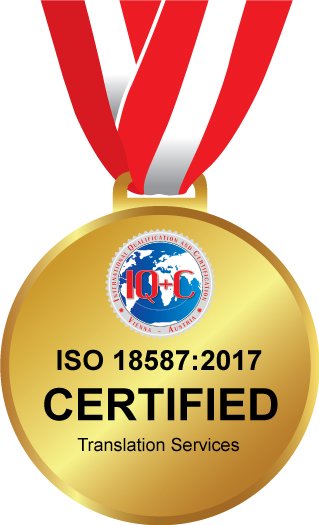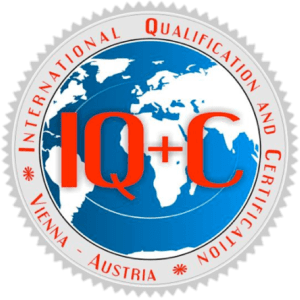ISO 18587:2017
Translation Services -Post-Editing of machine translation output -Requirements
ISO 18587:2017 is an international standard that sets guidelines for the post-editing of machine-translation output. It outlines the competencies and qualifications required for post-editors, as well as the quality criteria that must be met for the final edited content. The standard provides recommendations for ensuring consistency, accuracy, and readability in post-edited machine translation texts. ISO 18587:2017 aims to establish a framework for effective post-editing practices, thereby enhancing the overall quality and usability of machine-translated content across various domains and industries.
Why i-LICS Certification?
It has all started with EN15038 in the Year 2005, as our experts were involved in developing the first European Standard in the Translation Industry. Then it became ISO 17100 in the year 2015. We provide therefore field expertise certification audits with added value for your systems through specialized auditors from the industry.
Ready to find out more?
Contact Us and book a strategic meeting to discuss the details of a Certification Audit. This free meeting session is only for organizations, not for freelancers
About ISO 18587 Post-editing of Machine Translation Output
ISO 18587:2017 is an International Standard that provides requirements for the post-editing of machine-translation output.
Here are some key points about ISO 18587:
1. Scope: The standard focuses on defining the tasks, skills, and competencies required for post-editing machine-translation output. It applies to professional translators, language service providers, and organizations that engage in post-editing activities.
2. Definitions: ISO 18587:2017 defines key terms related to post-editing, machine translation, and related concepts to ensure clarity and consistency in understanding the standard.
3. Post-Editing Process: The standard outlines the steps involved in the post-editing process, including assessing machine translation quality, making necessary edits to improve fluency, accuracy, and readability, and finalizing the edited text for delivery.
4. Competencies and Qualifications: ISO 18587 specifies the competencies and qualifications required for post-editors, including language proficiency, translation skills, technical knowledge, and familiarity with machine translation systems.
5. Quality Assurance: The standard emphasizes the importance of quality assurance measures throughout the post-editing process, including assessing the quality of machine translation output, implementing appropriate editing strategies, and verifying the accuracy and consistency of the edited text.
6. Client Requirements: ISO 18587 addresses the responsibilities of clients or organizations that request post-editing services, including providing clear instructions, defining quality expectations, and communicating feedback to post-editors.
7. Ethical Considerations: The standard includes considerations for ethical behavior and professional conduct in post-editing, such as respecting confidentiality, maintaining impartiality, and adhering to industry standards and best practices.
ISO 18587:2017 aims to provide a standardized framework for post-editing machine translation output, ensuring consistency, quality, and effectiveness in the post-editing process. By following the requirements and recommendations outlined in the standard, organizations, and language service providers can enhance the efficiency and reliability of post-editing services, ultimately improving the overall quality of translated content.
Certification Milestones
-
Free strategic meeting
-
Your tailored proposal
-
Confirmation
-
Stage 1 Audit date
-
Stage 2 Audit date (Certification)
-
Obtain your Certificate



